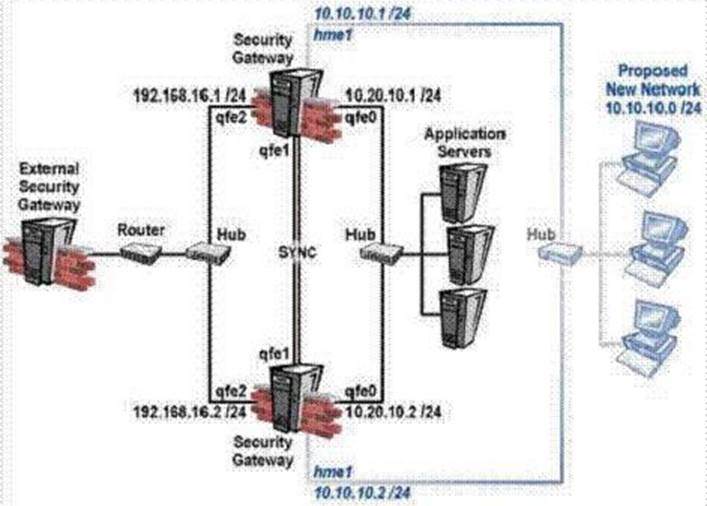Check Point 156-915.77 Check Point Certified Security Expert Update Blade Online Training
Check Point 156-915.77 Online Training
The questions for 156-915.77 were last updated at Nov 24,2024.
- Exam Code: 156-915.77
- Exam Name: Check Point Certified Security Expert Update Blade
- Certification Provider: Check Point
- Latest update: Nov 24,2024
In Cluster XL R76; when configuring a cluster synchronization network on a VLAN interface what is the supported configuration?
- A . It is supported on VLAN tag 4095
- B . It is supported on VLAN tag 4096
- C . It is supported on the lowest VLAN tag of the VLAN interface
- D . It is not supported on a VLAN tag
Which process is responsible for delta synchronization in Cluster XL?
- A . fw kernel on the security gateway
- B . fwd process on the security gateway
- C . cpd process on the security gateway
- D . Clustering process on the security gateway
Which process is responsible for full synchronization in Cluster XL?
- A . fwd on the Security Gateway
- B . fw kernel on the Security Gateway
- C . Clustering on the Security Gateway
- D . cpd on the Security Gateway
Which process is responsible for kernel table information sharing across all cluster members?
- A . fwd daemon using an encrypted TCP connection
- B . CPHA using an encrypted TCP connection
- C . fw kernel using an encrypted TCP connection
- D . cpd using an encrypted TCP connection
By default, a standby Security Management Server is automatically synchronized by an active Security Management Server, when:
- A . The user data base is installed.
- B . The standby Security Management Server starts for the first time.
- C . The Security Policy is installed.
- D . The Security Policy is saved.
The ________ Check Point Cluster XL mode must synchronize the physical interface IP and MAC addresses on all clustered interfaces.
- A . New Mode HA
- B . Pivot Mode Load Sharing
- C . Multicast Mode Load Sharing
- D . Legacy Mode HA
__________ is a proprietary Check Point protocol. It is the basis for Check Point Cluster XL inter-module communication.
- A . HA OPCODE
- B . RDP
- C . CKPP
- D . CCP
After you add new interfaces to a cluster, how can you check if the new interfaces and the associated virtual IP address are recognized by Cluster XL?

- A . By running the command cphaprob state on both members
- B . By running the command cpconfig on both members
- C . By running the command cphaprob -I list on both members
- D . By running the command cphaprob -a if on both members
Which of the following is a supported Sticky Decision Function of Sticky Connections for Load Sharing?
- A . Multi-connection support for VPN-1 cluster members
- B . Support for all VPN deployments (except those with third-party VPN peers)
- C . Support for Secure Client/Secure mote/SSL Network Extender encrypted connections
- D . Support for Performance Pack acceleration
Included in the customer’s network are some firewall systems with the Performance Pack in use. The customer wishes to use these firewall systems in a cluster (Load Sharing mode). He is not sure if he can use the Sticky Decision Function in this cluster. Explain the situation to him.
- A . Sticky Decision Function is not supported when employing either Performance Pack or a hardware-based accelerator card. Enabling the Sticky Decision Function disables these acceleration products.
- B . Cluster XL always supports the Sticky Decision Function in the Load Sharing mode.
- C . The customer can use the firewalls with Performance Pack inside the cluster, which should support the Sticky Decision Function. It is just necessary to enable the Sticky Decision Function in the Smart Dashboard cluster object in the Cluster XL page, Advanced Load Sharing Configuration window.
- D . The customer can use the firewalls with Performance Pack inside the cluster, which should support the Sticky Decision Function. It is just necessary to configure it with the Cluster XL_SDF_enable command.
Latest 156-915.77 Dumps Valid Version with 846 Q&As
Latest And Valid Q&A | Instant Download | Once Fail, Full Refund

